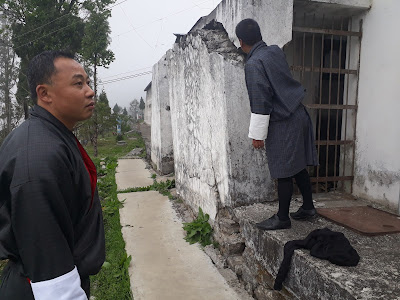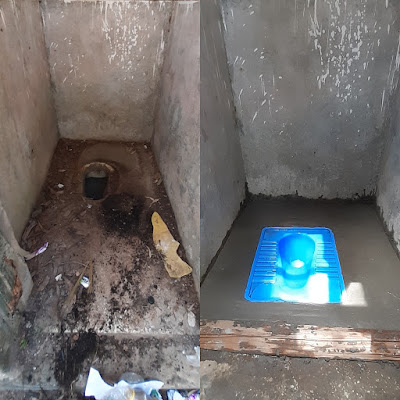 |
| A little boy manning a public toilet in Jaigoan |
1. Building a positive social identity as cleaners and rise above the stigma.
It's a mind game. We want to tell stories to let the cleaners understand the purpose of their work and walk out of our training with pride and self-respect. Of the many stories, we will definitely share about the Janitor who helped Nasa put a Man on the Moon.
In 1962, During a visit to NASA, President John F. Kennedy noticed a janitor carrying a broom down the hallway. He walked over to the man and said, "Hi, I'm Jack Kennedy. What are you doing?"
"Well, Mr President," the janitor responded, "I'm helping put a man on the moon."
2. Understanding a Clean Toilet and knowing what it takes to achieve that.
Cleaners are generally illiterate and come from the poorer section of the society where they make do with basic or no facilities at all. Their idea of a clean toilet may not be clean enough. They need to see their goals with clarity in order to work toward that.
 |
| Giving a short course to Memorial Chorten Toilet Manager |
3. Using the right tools and gears for safety and Dignity
Using the right tools and gears can not only ensure safety but also make the work really easy and stylish. If we are going to change people's perspectives on cleaning job we must begin with this; a cleaner in a clean uniform with boots and gloves and holding a good mop will give an impression of a passionate worker who knows his job well. It adds dignity to the job.
4. Basic skilling in plumbing, carpentry, electrical and masonry will be given to skill-up the cleaners to enable them to carry out timely maintenance. If we observe carefully, all big damages start small and gradually. One nail on time can save a toilet from falling apart. But often in the absence of basic skills and accountability, even the most manageable damages are kept aside for the annual maintenance budget.
5. Use of daily cleaning Checklist to ensure consistency
By streamlining the job of the cleaners through a daily system of check and balance that will ensure consistency and sustainability. This is effectively used in every organization, including shopping malls in big cities, it's, therefore, high time we introduce it in Bhutan.
If you know someone who needs this training please let them know, and if the person is unable to fill out the form kindly help them. But note that it's only for the cleaners.
Talking about the overwhelming response we got from general civil servants, some of my friends said it could for the want of a certificate that may be useful while seeking similar jobs in counties like Australia. With no affiliation with any institute in Australia, our certificate, even if we issued one, may not carry any weight at the moment. But, it has opened our eyes to the possibility of a similar arrangement that could help earn revenue for Bhutan Toilet Org from the training course and guarantee employment in the cleaning sector down under. It's a good dream, isn't it?









































